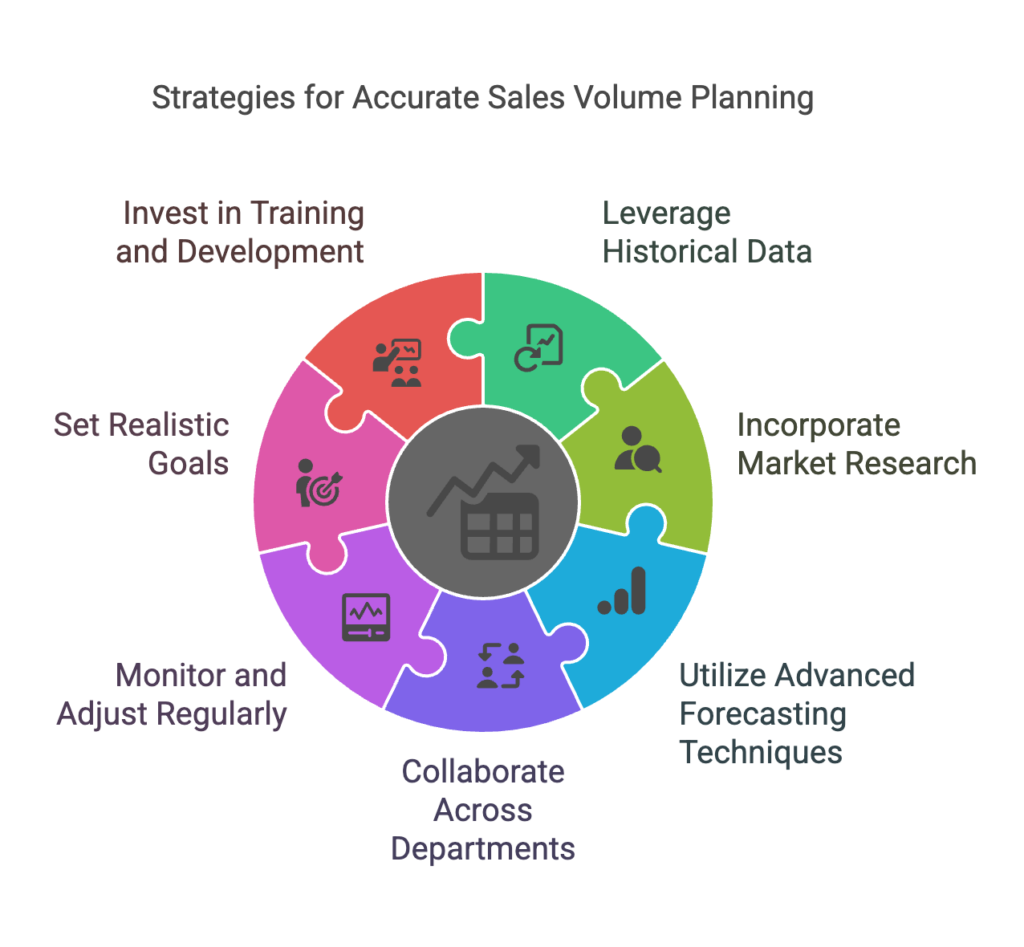Mastering Sales Volume Planning for 2025: Strategies for Accuracy

In today’s fast-paced business environment, accurate sales volume planning is crucial for organizations aiming to thrive in 2025. This document outlines practical strategies that can enhance the precision of sales forecasts, ensuring that businesses can meet customer demand while optimizing resources. By implementing these strategies, companies can improve their decision-making processes, align their operations with market trends, and ultimately drive profitability.
Understanding Sales Volume Planning
Sales volume planning involves predicting future sales to ensure that a business can meet customer demand without overproducing or underproducing. It requires a deep understanding of market trends, customer behavior, and internal capabilities. Accurate sales volume planning not only helps in inventory management but also in financial forecasting and resource allocation.
Key Strategies for Accurate Sales Volume Planning

1. Leverage Historical Data
Utilizing historical sales data is one of the most effective ways to forecast future sales. Analyzing past sales trends can provide insights into seasonal fluctuations, customer preferences, and market dynamics. Businesses should invest in robust data analytics tools to extract actionable insights from their historical data.
2. Incorporate Market Research
Conducting thorough market research is essential for understanding external factors that can influence sales volume. This includes analyzing competitor strategies, market conditions, and consumer behavior trends. Engaging with customers through surveys and feedback can also provide valuable information that can refine sales forecasts.
3. Utilize Advanced Forecasting Techniques
Employing advanced forecasting techniques, such as machine learning algorithms and predictive analytics, can significantly enhance the accuracy of sales volume predictions. These technologies can analyze vast amounts of data and identify patterns that traditional methods may overlook.
4. Collaborate Across Departments
Sales volume planning should not be a siloed process. Collaboration between sales, marketing, finance, and supply chain departments can lead to more accurate forecasts. Regular communication and sharing of insights among these teams can help align strategies and improve overall planning accuracy.
5. Monitor and Adjust Regularly
Sales volume planning is not a one-time activity. It requires continuous monitoring and adjustment based on real-time data and market changes. Businesses should establish a routine for reviewing forecasts and making necessary adjustments to stay aligned with actual sales performance.
6. Set Realistic Goals
Setting realistic sales targets is crucial for effective volume planning. Overly ambitious goals can lead to disappointment and misallocation of resources. Businesses should base their targets on data-driven insights and market realities to ensure they are achievable.
7. Invest in Training and Development
Equipping teams with the necessary skills and knowledge in sales forecasting can lead to improved accuracy. Investing in training programs that focus on data analysis, market research, and forecasting techniques can empower employees to contribute effectively to the planning process.
Mastering sales volume planning for 2025 requires a multifaceted approach that combines data analysis, market research, and cross-departmental collaboration. To achieve this, an effective sales force management software would be really ideal. A field sales app that covers most of the features mentioned above will help you in effective sales volume planning.
As we move towards 2025, organizations that prioritize effective sales volume planning will be better positioned to navigate challenges and seize opportunities.
Frequently Asked Questions
1. How can sales forecasting improve sales performance?
Accurate sales forecasting helps businesses plan resources, set realistic targets, and align sales efforts with market demand for better results.
2. What strategies ensure accurate sales volume planning?
Use historical data, market research, advanced forecasting techniques, and cross-department collaboration to predict sales accurately.
3. How can historical data and market research help predict sales?
Analyzing past sales trends and market conditions reveals patterns in demand, customer behavior, and seasonal fluctuations.
4. How does cross-department collaboration improve sales forecasts?
Sharing insights between sales, marketing, finance, and supply chain ensures forecasts reflect all operational realities and market trends.
5. What tools or software can streamline sales volume planning for FMCG businesses?
Sales force management software and field sales apps automate data collection, analysis, and reporting for faster, precise planning.

